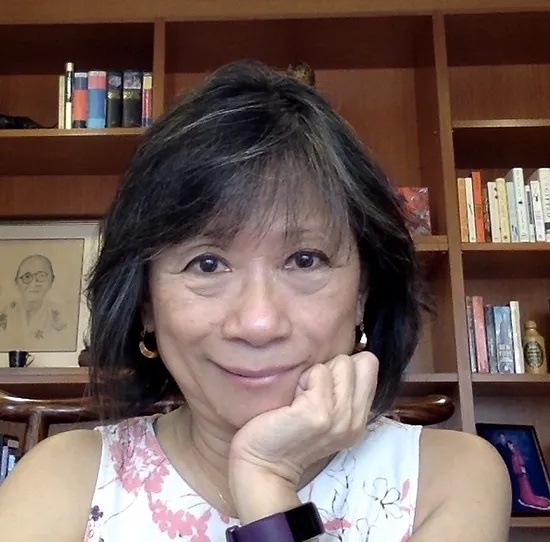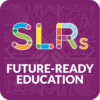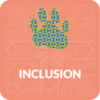Critical factors in continual improvement include the agility to innovate. And, as a forward-thinking school, ISKL has been exploring the possibilities and implications of AI tools for student learning. This insightful article by leading international schools consultant Ochan Kusuma Powell and ISKL High School Learning Resource Teacher, Becca Leech gives us food for thought on the potential AI offers to enhance learning and inclusion.
Assistive technology has long been used to include students with special educational needs in our schools, and our use of it has evolved as new technology has advanced. Many will remember ‘Dragon Dictation’ as an early programme that served students who had difficulty getting ideas down in writing. Students spent long hours training the software to respond to the patterns of their spoken language for the programme to transcribe it into written form.
Nowadays, voice typing and commands have been built into many commonly used applications, making them more effective, easier, and more intuitive to use. However, each time new tools are introduced to help students, there is a corresponding backlash from educators who worry that assistive technology allows students to ‘skip over’ necessary learning milestones. We only need to remember what it was like when calculators were first introduced into maths classrooms, or when students began to use the internet to support their research, to recall how each produced resistance from adults who worried that tools were supplanting student thinking and learning. The explosion of generative AI has been no different.
While we acknowledge concerns about the rapid development and adoption of AI, we recognize it also offers great potential to include students in more sophisticated ways. AI holds the promise of making the regular curriculum more accessible to students with learning needs. For those students who struggle with organization, time management, literacy, and communication, AI can provide greater access to learning in all areas and automatically differentiate instruction. For example, there are voice transcription apps such as Otter AI and note-taking apps such as Notion AI and Canva Magic Write, which allow students to synthesize their learning in different formats, as presentations or in bullet points for oral reports. These same apps can also break down large assignments into manageable chunks and then schedule due dates into a calendar. This provides a personalized approach to meet student needs.
While there have been efforts to ban AI and specifically ChatGPT in classrooms, students have found their own ways to use it. In fact, all of us have found AI to be increasingly a part of our daily lives. Facial recognition, email filtering capabilities (e.g., for spam mail), and setting electronic reminders all use AI. It’s now time to consider how AI can be used in Universal Design, a framework that is used for designing learning environments and opportunities that are accessible to all. This would include the youngest students who are developing language, to those in university preparation programmes. AI offers us the tools to open pathways that might previously have been out of reach.
Supporting students with AI
There are many ways that inclusive teachers are already using AI to provide curricular access to students with learning needs. Some represent enhancements to the assistive technology that has long been used:
- Writing tools (e.g., spelling and grammar checkers, word prediction)
- Text-to-speech and speech-to-text
- Note-taking tools
- Augmentative communication tools for those with speech disorders
Other ideas offer new potential for making accommodations for student learning needs and providing curricular access, such as:
- Summaries of original academic research that may be difficult for many students to access
- Performance leveling in maths computations and foreign language practice
- Serving as a thinking partner by offering comparison responses
- Providing leveled reading texts
- Showing students how to construct summaries
- Providing exemplars of applied writing tasks such as emails for professional purposes
- Helping students check their answers
- Providing feedback to students on their work
These tools can benefit all learners, including those who are preparing for external examinations, whether or not they have special educational needs.
Extending thinking in the inclusive classroom
The examples above require all users – students as well as teachers – to apply critical thinking skills that would otherwise be lost with a wholesale ban of AI tools like ChatGPT. For example, students can ask ChatGPT for help in understanding command terms (‘Compare’, ‘Analyse’, etc) and organizing their thinking when writing expository essays. Teachers can model appropriate uses of ChatGPT, explore responses for accuracy and bias, and consider when to cite ChatGPT – as well as when writing is clearly plagiarized. The use of AI allows for greater curricular access, thereby promoting equity and inclusion in the classroom.
Teachers can benefit, too
For teachers, too, these tools can provide teaching materials that are targeted and personalized for students. Teachers can benefit from a time-saving AI personal assistant to create lesson plans, data collection sheets, leveled readings or individualized practice to meet the diverse needs of students in their classrooms. In terms of moderating student work, teachers can also obtain exemplars from ChatGPT and use them to achieve standardization in assessing writing. For special education teachers, the use of AI could drastically cut down on the time-consuming paperwork requirements for students with special educational needs.
Addressing concerns: plagiarism, bias and inaccuracies
Teachers and school leaders have been quick to raise concerns as soon as students began using AI tools such as ChatGPT. Concerns have largely centered around three main issues: plagiarism or cheating; inaccuracies and bias found in responses generated by AI; and student data privacy. We agree with all these concerns and recognize the need for schools to adopt new policies and support teachers with high-quality AI professional development.
Rather than ban AI from the classroom, teachers have opportunities to use these tools along with students to model critical thinking and ethical decision-making. While recognizing the plagiarism challenge AI presents, it also simultaneously offers opportunities to teach students the importance of personal academic integrity and to become critical thinkers who can detect biases and inaccuracies in the texts they read.
At a systems level, schools will need to provide tools, time and opportunities for teachers to develop new approaches to working with students in the age of AI. For example, teachers will need access to new, more sophisticated plagiarism checkers to efficiently check that student work is their own.
Teachers may also adopt alternative ways of verifying the authenticity of student work, including asking for verbal explanations of their thinking processes or to plan essays on paper. Teachers will need opportunities to share their concerns and ideas for using AI to meet the most challenging needs that students face. This will require targeted and specific professional learning opportunities.
Privacy concerns
Other valid worries come from protecting student data, an important area for concern. This is similar to concerns voiced about the use of all social media and downloaded apps.
In many instances, when students download an app, they may be required to open an account. For example, ChatGPT requires that each user opens an account, verified with a personal mobile phone number. At the current time, OpenAI, the parent company of ChatGPT, has not disclosed how the information might be used. School leaders must review and adapt their current safeguarding policies and procedures regarding internet safety to respond to the novel concerns raised by AI.
AI is here to stay
Deliberately planning for the use of AI in a framework of Universal Design will make schools more inclusive. By offering opportunities for all students to engage in higher-level thinking while strengthening basic skills, they can gain access to more stimulating and motivating learning. Despite the many concerns brought about by the use of AI, the potential for enhancing student thinking and learning – and saving teacher time – is vast. AI is here to stay, and it is our responsibility to teach students to use it safely.
About Ochan and Becca
 |
Ochan Kusuma Powell, EdD has had a lifelong interest in developing inclusive schools and currently serves as a consultant to international schools in the areas of coaching, collaboration, and inclusion. |
 |
Becca Leech MEd is a High School Learning Resource teacher at ISKL. She has been an inclusive educator for over 30 years, serving as a teacher, assistive technology specialist, and program coordinator. |





